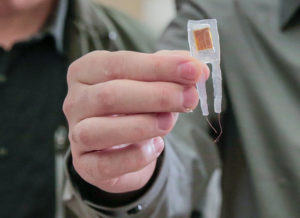
A New Weapon against Obesity
A new study based on a novel implantable weight loss device that was published in Nature, has shown that it was able to help rats shed almost 40 percent of their body weight. This implant device developed by engineers at the University of Wisconsin–Madison could offer a promising new weapon for the battle against obesity. More than 700 million adults and children worldwide are obese, according to a 2017 study that called the growing number and weight-related health problems a “rising pandemic.”
According to articles, the device itself is minuscule – measuring less than 1 centimeter across. The devices are said to be safe for use in the body and implantable via a minimally invasive procedure and is powered by the stomach’s natural churning motion. The devices are also said to generate a gentle electric pulse to the vagus nerve, which links the brain and the stomach, and signals to the brain that the stomach is full even after a small snack.
“The pulses correlate with the stomach’s motions, enhancing a natural response to help control food intake,” says Xudong Wang, a UW–Madison professor of materials science and engineering.
According to the University of Wisconsin –Madison, “[u]nlike gastric bypass surgery, which permanently alters the capacity of the stomach, the effects of the new devices are reversible. When Wang and his collaborators removed the devices after 12 weeks, the study’s rats resumed their normal eating patterns and weight bounced right back on.”
Articles have stated that the new device also has several advantages over existing devices that stimulates the vagus nerve for weight loss. That existing unit, “Maestro,” approved by the Food and Drug Administration in 2015, administers high-frequency pulses to the vagus nerve to block all communication between the brain and stomach. The Maestro device also require batteries which frequently must be recharged. In contrast, “Wang’s device contains no batteries, no electronics, and no complicated wiring. It relies instead on the undulations of the stomach walls to power its internal generators. That means the device only stimulates the vagus nerve when the stomach moves.”
